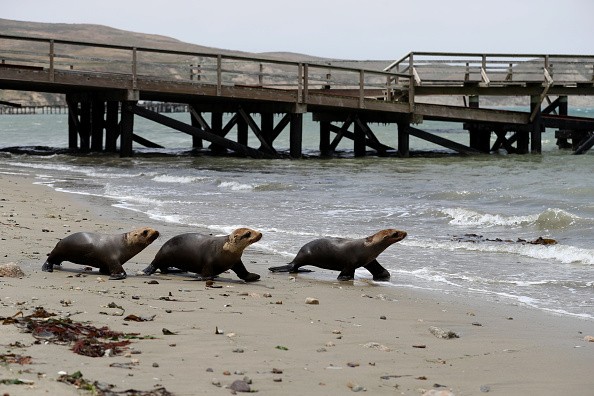Recently, the NSW government partially prohibited firefighting chemicals and the chemical has been discovered in the pups of endangered Australian sea lions and in Australian fur seals.

Polyfluoroalkyl Substances ('PFAS')
The discovery represents another likely blow to the survival of Australian sea lions. Hookworm and tuberculosis had already threatened their few and decreasing population, which has reduced by over 60 percent over four decades.
The new research which is part of a lengthy health study of sea lions and seals in Australia - noticed the chemicals from 2017 to 2020 in animals at different colonies in Victoria and South Australia.
And also in pups, the chemicals Per- and polyfluoroalkyl substances ('PFAS') were discovered in young animals and in a grown-up male. There was also proof of transmission of the chemicals from mothers to newborns.There has been a report that PFAS causes cancer, endocrine disruption, developmental and reproductive defects, and can compromise immune systems.
Exposure can take place through various sources both through contaminated water, air and soil, and common household products that have PFAS. They are usually seen in paints and coatings, polishes, stain repellents, in addition to being used in firefighting foam.
The researchers are convinced the seals and sea lions consumed the chemicals through their fish, crustacean, squid, and octopus, meals.
The Chemicals Discovered in Newborns
In spite of South Australia prohibiting the use of PFAS that contains firefighting foams in 2018, these chemicals persist and are not easily degradable in the environment. In Victoria, they have not been prohibited. Released in Science of the Total Environment, this is the first study in Australia to report PFAS concentrations in sea lions and seals.
Concentrations of PFAS in some animals were similar to those found in marine mammals in the northern hemisphere both harbor seals and southern sea otters. Specifically high concentrations of the chemicals were discovered in newborns - which was transferred during gestation or through the milk of their mothers.
Research co-lead Dr. Rachael Gray from the Sydney School of Veterinary Science said: "This is particularly disturbing, given the essentiality of the developing immune system in suckling animals." She also added that while it was not achievable to study the direct effect of PFAS on individual animals' health, the outcomes are important for proceeding monitoring.

The Food Chain
With the Australian sea lion now added to the endangered list, and Australian fur seals going through colony-specific population decrease, it is critical that we have the knowledge of all threats to these species, both the role human-made chemicals play, if we are to execute effective conservation management.
The discoveries have implications for the complete food chain of which the pups are included, both fish, adult sea lions and seals, and even humans."Due to the fact that PFAS last a long time, they can turn concentrated inside the tissues of living things. This boosts the likeliness for exposure to other animals in the food chain, especially top marine mammal predators such as sea lions and seals," said Dr. Gray.
Related Article : Sea Lion Grabs Little Girl, Pulls Her Into Steveston Waters
For more news, updates about sea lions and fur seals don't forget to follow Nature World News!
© 2025 NatureWorldNews.com All rights reserved. Do not reproduce without permission.





